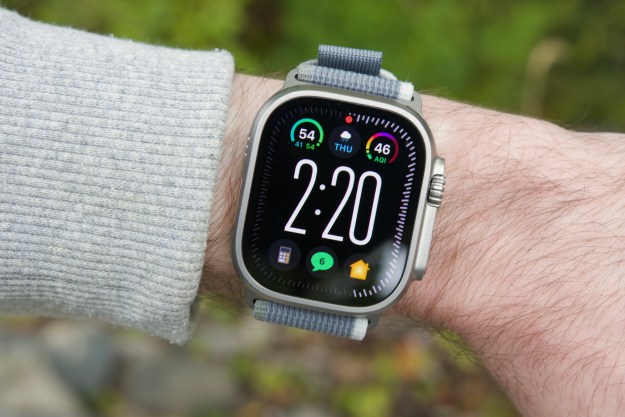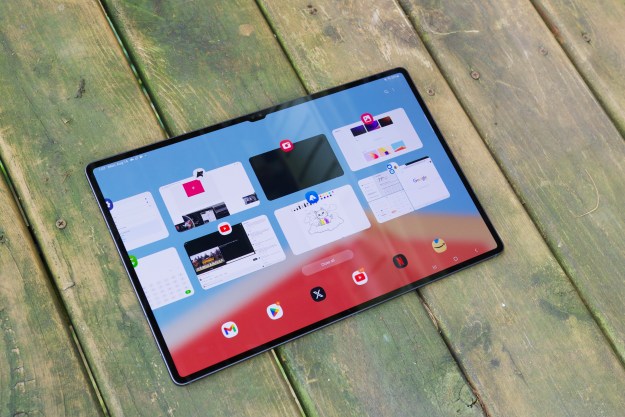
“If you can sleep a little sounder knowing your data is being safely tucked away on an SD card every night, Iomega’s SuperHero dock pays for itself in peace of mind.”
- Ultra-simple nightly backup and charging
- Sleek, high-quality dock
- Included 4GB SD card
- Only backs up photos and contacts
- No way to restore contacts without a replacement iPhone
- Mind-bendingly slow

By serving as a dock and backing up your phone’s contacts and photos automatically to an included SD card, the SuperHero maintains a current record of your phone’s most precious data automatically with zero effort. When your phone gets lost, stolen or succumbs to the watery depths of a toilet, just pop your replacement into the dock, press restore and you’re back where you started.
Why not just use iTunes?
As the most well-versed and fastidious iPhone users will probably note, your iTunes-equipped computer does the same thing, for free. In fact, it does it even better, because it preserves music, apps, notes, and other data from your phone as well. Here’s the key: Iomega built the SuperHero on the (correct) assumption that most iPhone users aren’t brushing their teeth, changing into pajamas, then turning their computers on and plugging their iPhones in for a full system backup every night before bed. Consequently, when they lose their phones, they lose days, weeks, months or years of data from the infrequent backups.
 Design and build quality
Design and build quality
Cartoony name aside, the SuperHero takes the form of a pretty slick, modern iPhone dock that wouldn’t look out of place on a professional’s desk or a classy oak night stand. It’s just a smallish square with rounded edges and a bright brushed metal finish. The glossy black phone receptacle has enough room to accommodate multiple versions of the phone (iPhone 4, 3G and 3G S) and all the cases we tried it with, which is absolutely essential for the whole “using it daily” thing. Around back, there’s a small connector for a power plug and a slot for an SD card. Iomega includes a 4GB Lexar card with the device, so it’s ready to use out of the box.
Build quality is generally quite solid, but the rubber base on our review unit didn’t like to sit flat out of the box. Problem: It wasn’t seated properly around a cutout in the center section, where Iomega printed all the identifying information. After taking five seconds to poke it in with a fingernail, the SuperHero sat flat and felt sturdy enough to live up to its name.
How it works
The SuperHero prompts you to download the compact companion app when you plug it in for the first time, and after a quick trip to the iTunes store, it’s ready to go. A graphic on top of the device reminds you to unlock your phone prior to dropping it into the cradle, which is not a point you want to skip over: Unless you swipe to unlock your iPhone, the app never opens and the backup never commences. As long as it’s unlocked, the SuperHero app opens (regardless of whether it’s already in the background or not) and automatically begins backing up in 30 seconds. You can press a button to cut to the chase, too, if you’re in a hurry.
And you might be in a hurry after you find out how slowly the SuperHero operates. Though it does your entire contact list in a snap, photos crawl onto the card so slowly you can literally watch individual kilobytes tick by. A single 400KB photo took nearly a minute to transfer, and after a solid hour of backup, it managed to handle just 70 of the 1,253 photos on our test device. Sure, your phone probably needs to charge for a few hours anyway, and it doesn’t have to start from scratch every time, but our phone still wasn’t anywhere close to backed up after one charge. At this rate, it might actually be faster to push all your photos to a cloud-based service like Flickr, Picasa or Dropbox.

Restoring is as simple as clicking “restore” within the app, but that’s presuming you replace your dropped, stolen or nuked iPhone with… another iPhone. If you start over with say, an Android device, you’re out of luck. You can see your pictures on the SD card by popping it into a PC, but contacts are stored as an MBP file, which can’t be converted to any more universal file format. You would need to borrow a friend’s iPhone, restore your contacts to it, connect it to iTunes, and export them to a program like Outlook. Ouch.
Conclusion
Our biggest complaint about the SuperHero belongs in a hate letter to Apple, not Iomega. The overly protective Cupertino company won’t open up the whole barn of iPhone storage to third-party accessories, so the SuperHero can only back up photos and contacts. No videos, no music, no apps, no notes. Maybe it’s really more like a bulletproof vest than a parachute, because it will preserve the vitals, but it’s still going to hurt like hell if you have to use it.
So no, the SuperHero doesn’t eliminate the need to regularly back up with iTunes, but it does preserve two of the most valuable assets on your phone with zero hassle. After all, you can download your apps again and probably already have a copy of your music files on your computer, but photos and years of contact information can be lost forever.
At $70, Iomega’s SuperHero costs about double your average nightstand dock, and a slew of other backup options including iTunes and cloud-based options will give you the same results. But nothing beats the SuperHero for ease of use. If you can sleep a little sounder knowing your data is being safely tucked away on an SD card every night, Iomega’s SuperHero pays for itself in peace of mind.
Highs:
- Ultra-simple nightly backup and charging
- Sleek, high-quality dock
- Included 4GB SD card
Lows:
- Only backs up photos and contacts
- No way to restore contacts without a replacement iPhone
- Mind-bendingly slow
Editors' Recommendations
- Everything announced at Apple’s September 2022 event: iPhone 14, Watch Ultra, AirPods Pro 2
- How to download iOS 13 on your iPhone or iPod Touch
- iPhone 12 may not come with a pair of free headphones in the box



